The NHL is a league that operates under a salary cap with a defined limit and ceiling. The organizations that experience the most on-ice success are often the ones that most efficiently allocate their resources under the constraints placed upon them by the rules of the cap system. Smart general managers can find value by identifying undervalued gems in the annual free agent market, or by inking a player to a long-term deal before they break out and see a significant rise in value.
The opposite is also true, and many a front office executive have been fooled by intangibles, unsustainable runs of shooting luck, or memorable performances in high-pressure situations, such as the Stanley Cup Playoffs. In the most dire of cases, it’s often a combination of all three factors that sinks a contract into infamy.
It should be noted that a player’s presence on this list only means that their contract is poor and not generating a level of on-ice value in line with their salary, rather than an outright judgment on the player themselves. Also, where a player’s team is in their competitive timeline will not be weighted heavily as a contract should primarily be judged based on play and future projection. Players who have only one poor season under their belts will not be judged as harshly, but a second-consecutive campaign of underperformance will likely vault them higher on this list in future updates.
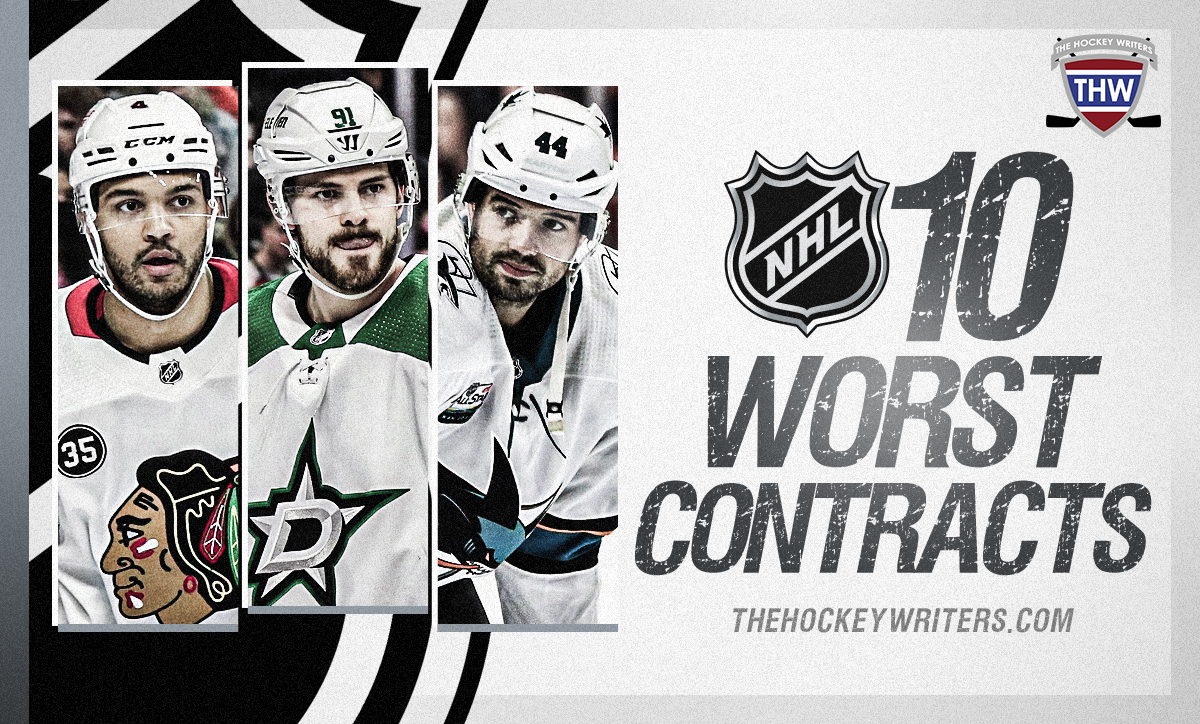
For the purposes of this article, any players still on an entry-level contract (ELC) are ineligible given the hard cap on the annual average value (AAV) assigned to their contract. Also, any players with only one year remaining on their current contract are excluded as a single season does not allow a deal to accrue enough negative value to rank highly on this list. Players who are all but retired due to suffering serious injuries – such as Carey Price, Nicklas Backstrom, Jakub Voracek, and Shea Weber among others – are not included on this list.
Since the last update, Tyler Seguin (40 points in 50 games), Jacob Markstrom (.913 SV% in 30 games), Travis Sanheim (27 points in 50 games), and Sergei Bobrovsky (.910 SV% in 36 games) have all improved their play to the point that they are either providing value in line with their cap hit, or have contracts that are too short to accumulate much negative value.
Contracts will be listed with their AAV as well as years remaining on the deal (including the 2023-24 season). With those notes and parameters in place, here are the 10 worst contracts in the NHL as of the midseason mark of the 2023-24 season.
10. Darnell Nurse, Edmonton Oilers
Contract Remaining: Seven years, $9.25 million AAV
Kicking off this midseason update is Edmonton Oilers defenseman Darnell Nurse, who remains in the same spot that he occupied in the preseason rankings. The 28-year-old blueliner has tallied six goals and 17 points across 46 games this season which puts him on pace for his lowest point total since the 2017-18 season.
It’s quite an underwhelming output from the seventh-highest-paid defender in the NHL. For reference, that cap hit puts him above the the likes of Roman Josi ($9.059 million), Cale Makar ($9 million), Victor Hedman ($7.87 million), and Quinn Hughes ($7.85 million). That quartet represents four of the five highest-scoring defenders this season, and all four count for less against the cap than the Oilers’ rearguard.
Related: Every NHL Team’s Worst Contract
It seems like Edmonton has come to terms with the caliber of player Nurse is and projects to be going forward. He currently ranks 47th among all NHL defenders in average time on ice (ATOI) in all situations, with his 22:23 minutes per night coming in as his lowest nightly usage since the 2017-18 season. Part of that is due to the addition and integration of Mattias Ekholm during his first full season with the Oilers, but that doesn’t excuse the fact that Nurse was miscast and overpaid, even if he’s second on the team in ATOI at five-on-five and the team’s most frequent penalty-killing defender.
Only Cody Ceci has posted worse shot- and chance-share metrics at five-on-five among the Oilers regular defensemen, and Nurse tied for the fourth-worst penalty differential among all NHL defensemen with a minus-11 rating (six drawn and 17 taken).
Nurse is a notable physical specimen a capable puck-mover at a hulking 6-foot-4, 221-pounds but on a deal that takes him through his age-35 season, it’s difficult to not highlight his contract as a sore point on the Oilers’ books.
9. Alex Killorn, Anaheim Ducks
Contract Remaining: Four years, $6.25 million AAV
The first new entry on the list is veteran forward Alex Killorn, who signed a hefty multi-year deal with the Anaheim Ducks this past offseason in free agency which places him just outside of the top-75 highest paid forwards this season. His cap hit makes his current output of six goals and 19 points in 34 games quite a disappointing return on investment, even if he was mainly brought in to provide a veteran voice and lend his Stanley Cup pedigree to a young Ducks’ locker room.
Killorn is surrounded by a much weaker supporting cast in Anaheim and is trudging through poor shooting luck, but that doesn’t change the fact that he is producing at a pace of 14 goals and 45 points over 82 games, his lowest clip since the 2014-15 season. The Ducks also recently announced that he will miss several weeks to recover from knee surgery, after also suffering a broken finger during pre-season. Significant injuries become much more difficult to overcome later in a player’s career, and Killorn’s immediate future as an impact player in the NHL is already in jeopardy.
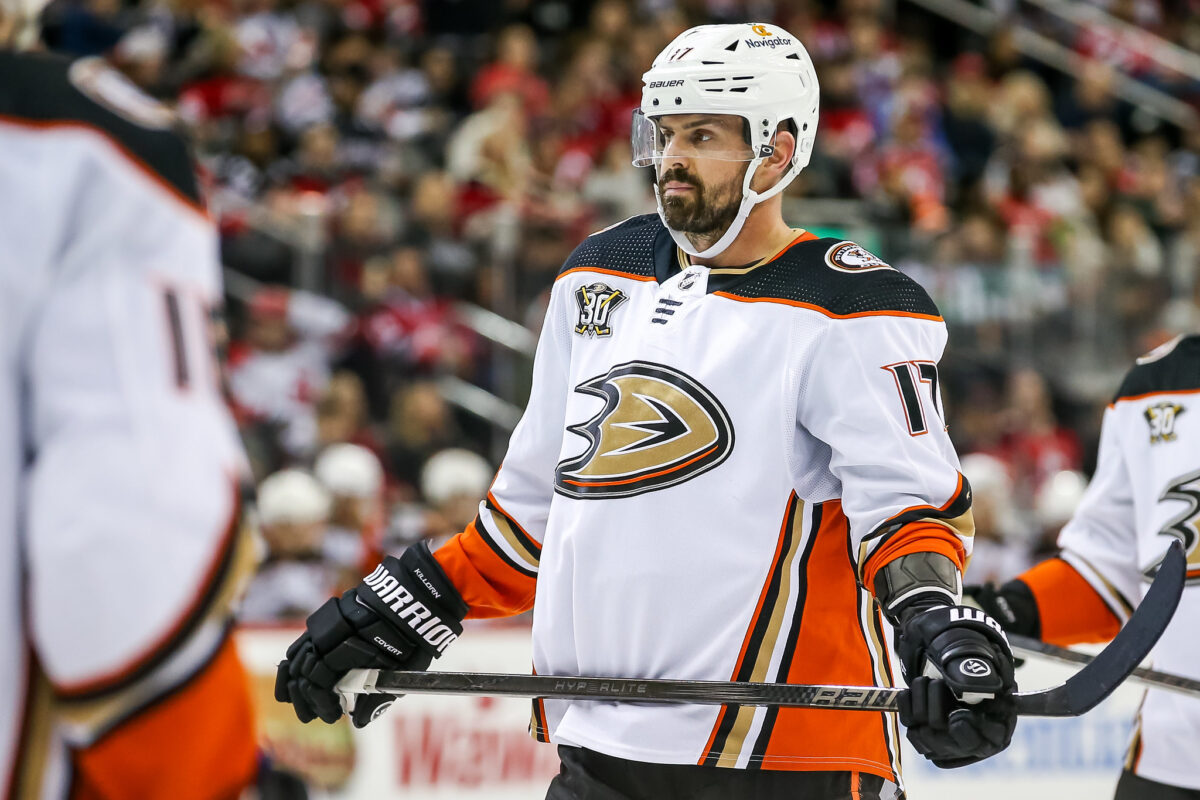
The Ducks account for lower shares of all expected goals (xGF%) and high-danger chances (HDCF%) when he’s on the ice at five-on-five compared to when he’s not, and is drawing penalties at the lowest rate of his career. Those are results you expect of a bottom-six skater, not someone being paid at a first-line rate through his age-37 season.
The Ducks overpaid for a 34-year-old based on intangibles though they can be excused given that the team won’t be competitive for another few seasons. I’m assessing deals in a vacuum however, and this contract has rightfully takes its place among the NHL’s worst as of the midway mark of the 2023-24 campaign.
8. Josh Anderson, Montreal Canadiens
Contract Remaining: Four years, $5.5 million AAV
Despite some reshuffling within the rankings, Montreal Canadiens winger Josh Anderson – who turns 30 later this spring – keeps his spot among the top 10. The physical 6-foot-3, 224-pound forward ranks fourth among Canadiens forwards in cap hit and just outside the top 100 of all forwards for the 2023-24 season.
Anderson doesn’t appear to be the player who potted five playoff goals during Montreal’s unexpected run to the 2021 Stanley Cup Final. He only boasts seven goals and 13 points to his tally over 46 games this season despite seeing the fourth-most ATOI at five-on-five among Canadiens forwards, and over two minutes a night on the power play.
For that type of investment, the Canadiens had to have hoped for more than bottom-six production, even though his contract was inked under the previous regime headed by former general manager Marc Bergevin and the team is technically still in the midst of rebuilding.
You may also like:
- Prime Video to Carry National Monday Night Games in Canada
- Lucas Pettersson — 2024 NHL Draft Prospect Profile
- Jets’ Goaltending Advantage Against Avalanche Hasn’t Materialized
- Oilers Represent Corey Perry’s Best Chance at Second Cup
- Brad Marchand’s Antics Should Motivate the Maple Leafs
Anderson’s relative on-ice share of shots (SF%), scoring chances (SCF%), HDCF, and xGF at five-on-five sit third or worse among the team’s regular forwards, meaning that the team performs much better with him sitting on the bench. Montreal is on track to make a 14-point improvement in the standings over last season and appear much more competitive than they did in 2022-23, but Anderson hasn’t done much beyond drag them down in terms of controlling the run of play.
At 29 years of age, there’s little room for improvement at this stage of his career, and health is already an issue (he’s missed 30 games over the last three seasons). This contract wasn’t predicted to age well at the time of signing, and that assumption is proving true with multiple seasons remaining before the deal expires.
7. Brendan Gallagher, Montreal Canadiens
Contract Remaining: Four years, $6.5 million AAV
Following Anderson is his teammate, 31-year-old winger Brendan Gallagher, who fashioned an unlikely career as a feisty scoring winger after being selected in the fifth round of the 2010 NHL Entry Draft. Despite scoring at or above a 30-goal pace during his prime seasons, he is paying the price for his playing style as he progresses further into his career.
Gallagher has managed to stay healthy in 2023-24 (he’s missed only two games) after only playing in about 60% of the Canadiens’ regular-season games between the 2019-20 and 2022-23 seasons, but his offense has not experienced the same rejuvenation.
Despite ranking third among Canadiens forwards in cap hit and 72nd among all NHL forwards, Gallagher has only scored eight goals and 16 points in 48 games this season, the third-consecutive season in which his rate of goal and point production has dropped from the previous campaign.
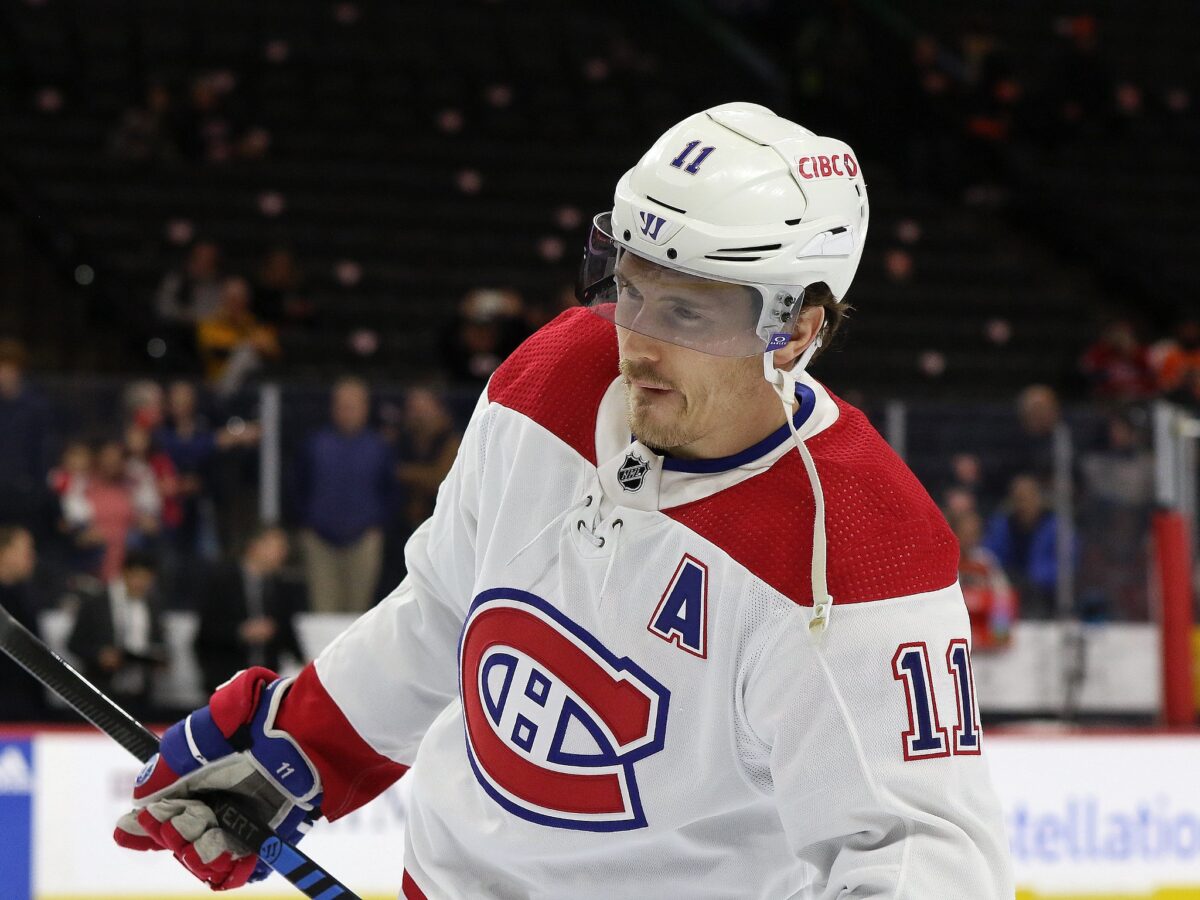
The general lack of availability and diminished production coupled with the term remaining on his deal throws the veteran forward into this uncomfortable discussion, and it’s difficult to see him ever return to the level which earned him the contract in the first place. Gallagher has admittedly been surrounded by a weak supporting cast amidst the Canadiens’ rebuild, but his individual shot- and chance-generation at five-on-five have also dropped compared to last season despite Montreal challenging for a wildcard spot.
Unless Gallagher continues to stay healthy for the duration of his current deal which will take him into his mid-30s and produces at a top-nine rate, his contract will remain on the list of the NHL’s worst for the foreseeable future.
6. Torey Krug, St. Louis Blues
Contract Remaining: Four years, $6.5 million AAV
Another returning name from my preseason rankings is St. Louis Blues defenseman Torey Krug, who is set to turn 33 before the end of this season. His current cap hit ties him with Colton Parayko and Justin Faulk for the biggest on the Blues’ blue line, and sits just inside top-pairing territory league-wide when removing players who are effectively retired.
Despite his hefty contract, Krug only ranks fourth on the Blues in ATOI in all situations, and has only scored one goal and 20 points in 49 games this season (though he leads the team’s defenders in scoring). Those numbers put him on pace for two goals and 33 points for the campaign, both of which would qualify as the lowest or second-lowest full-season marks of his NHL tenure and well-below what is expected of someone commanding his salary.
In terms of per-game production, his output during the 2023-24 season is the lowest of his career, though he has managed to feature in every one of the Blues’ games this season and is on pace to play more than 70 games in a single season for the first time since the 2017-18 campaign.
Krug has never been a defensive stalwart by any means, but his results on that end has diminished even further in recent years. There are many issues with using the plus-minus rating as an accurate measure of defensive effectiveness, but Krug has accrued a minus-42 rating over the past two seasons, the 12th-worst mark among all NHL skaters in that time frame. When the results are that extreme, there is likely a kernel of truth behind his ranking.
The Blues bet big on the trio of Krug, Faulk, and Parayko to be able to make up for the loss of former team captain Alex Pietrangelo, but that has proven to be a massive miss to date. It has cost Stanley Cup-winning coach Craig Berube his job and led to the club paying four defensemen aged 30 or older $4 million or more through the 2025-26 season with none of them looking like a top-pairing option on a contending team.
Krug and his contract are far from the only problems with the Blues’ roster and cap sheets, but they’re the most emblematic of the current state of the organization.
5. Johnny Gaudreau, Columbus Blue Jackets
Contract Remaining: Six years, $9.75 million AAV
There’s no sugar-coating it: the 2023-24 season has been nothing short of a nightmare for the Columbus Blue Jackets. From the Mike Babcock hiring and firing debacle in the summer, head-scratching decisions around the team’s young and promising players, and another futile season spent near the bottom of the Eastern Conference standings, things have not unfolded according to plan.
One of the biggest reasons is the diminished production from forward in 30-year-old Johnny Gaudreau, who surprisingly chose to sign with the Blue Jackets as the marquee free agent during the 2022 offseason. He partially delivered on the hype with 74 points in 80 games on one of the worst teams in the league last season, but his production has dropped significantly in 2023-24 despite the return of star blueliner Zach Werenski and a number of notable offseason acquisitions.
The long-term absences of Adam Fantilli (injury) and Patrik Laine (entered the NHL/NHLPA Player Assistance Program) hurt, as Gaudreau will be robbed of his two main offensive weapons for much of the rest of the season.
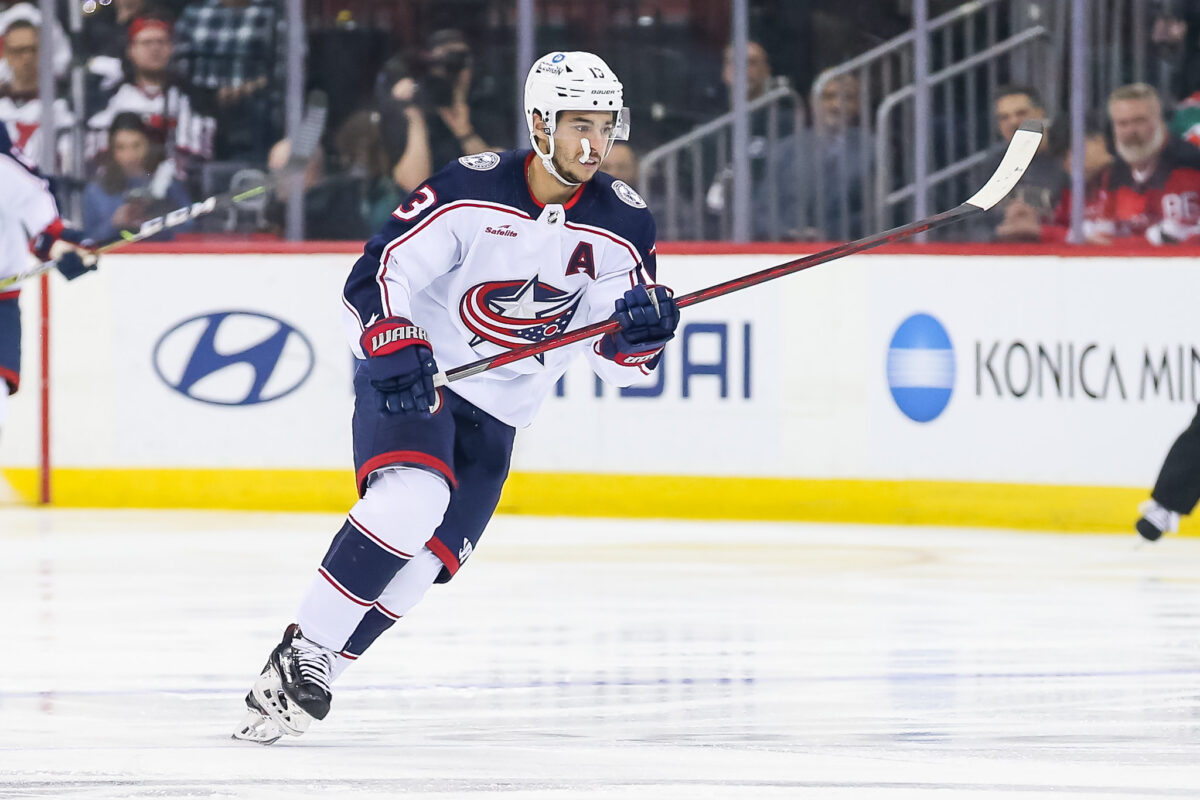
Gaudreau has scored seven goals and 32 points in 50 games this season which represents an 82-game pace of 11 goals, 41 assists, and 52 points, all of which grade out as the lowest or second-lowest marks of his career. A below-average supporting cast with the Blue Jackets aside, more should be expected of the 13th-highest paid forward in the NHL this season, and one who is only in the second year of a seven-year pact which takes him to age 35.
Gaudreau’s individual shooting percentage (SH%) is about half of his previous career low, so I’d expect him to score a few more goals in the second half of the campaign, even if his shot-rate has fallen for the second-consecutive season. How and if the Blue Jackets build around him before he truly exits his peak years will determine if this contract is judged as a failure upon expiry, but the early signs are worrying for an organization that has won a total of 15 playoff games in over two decades of existence.
4. Seth Jones, Chicago Blackhawks
Contract Remaining: Seven years, $9.5 million AAV
In fairness to Seth Jones, his ranking on this list is magnified by the current state of the Chicago Blackhawks. In a more competitive situation, his warts could be papered over and insulated. Instead, being miscast as a number one defender makes him as much a factor in their dysfunction as the rest of the roster. Jones’ deal takes him through the 2029-30 season when he will be 36 years old. He also carries a no-move clause (NMC) that functions as a major obstacle in any potential trade for the American rearguard.
Jones ranks fifth among all NHL skaters in all-situations ATOI (25:19 minutes per game) this season and has tallied one goal and 15 points in 35 games, sitting just outside the top-75 among all defenders.
Jones’ cap hit is currently tied for fourth among all NHL defensemen, with Adam Fox and Charlie McAvoy also coming in at a $9.5 million hit. Both have the benefit of being surrounded by stronger teammates but both also regularly post excellent relative metrics (how their team fared with them compared to without) despite playing on better teams.
Jones provides the Blackhawks with value by eating up more difficult minutes while insulating his younger teammates as they develop, but he’s a net-negative outside of that context. The last time he was a positive player in terms of his on-ice share of SF and xGF was the 2019-20 season with the Blue Jackets, with the team accounting for 52.7% of SF and 51.4% of xGF with him on the ice.
Jones has yet to replicate his 2017-18 season in which he scored 16 goals and 57 points in 76 games as a physically imposing 23-year-old, a performance which set the bar too high for what caliber of defenseman he could become. Unless he finds his way onto a team where he’s pushed down in the lineup, he will remain a negative asset in his current role and continue to feature highly on these kinds of lists.
3. Jack Campbell, Edmonton Oilers
Contract Remaining: Four years, $5 million AAV
It’s possible that no other goaltender has had a more turbulent past two seasons than 31-year-old Jack Campbell, who the Edmonton Oilers signed as a free agent during the 2022 offseason. A .916 SV% forged over 77 games with the Toronto Maple Leafs earned Campbell a five-year, $5 million AAV contract with the Oilers, but he hasn’t come close to delivering on the promise of that deal.
After a debut season in which he owned an .888 SV% in 36 games, Campbell posted a 4.51 goals-against average (GAA) and a .873 save percentage (SV%) in five games to start 2023-24 before being sent down to the American Hockey League (AHL). Those numbers rank 75th and 72nd respectively among all goalies to have played at least five games this season.
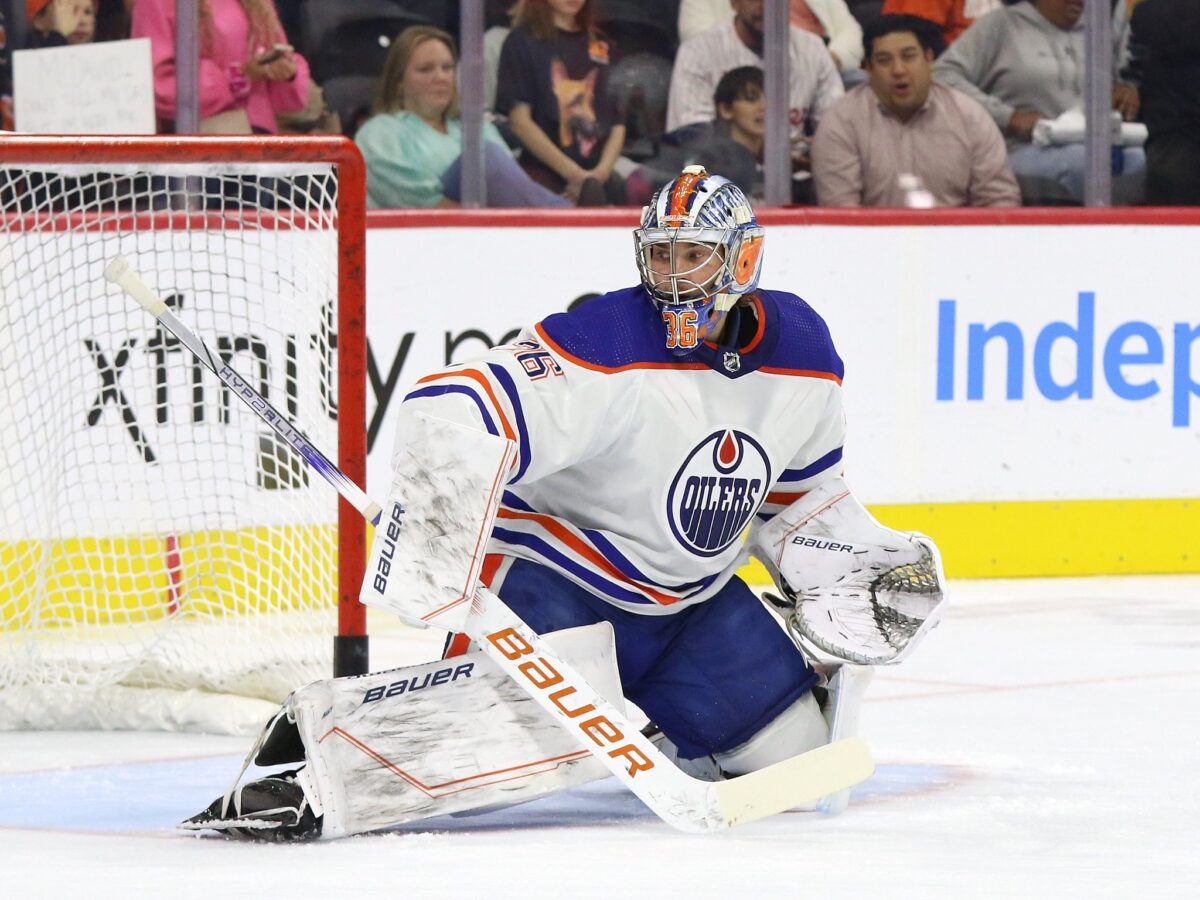
Campbell is tied for 11th in cap hit among all goalies to have played at least one game this season which excludes the likes of Price, Matt Murray, and Robin Lehner, all three of whom carry equal or greater cap hits. The fact that the Oilers resorted to sending him down to the minors not even halfway through the life of the deal and have only been able to bury $3.85 million of his total $5 million cap hit only adds to the misery for both team and player.
There was some hope that he could enjoy a turnaround after a dismal debut campaign, hence why he was not on this list at the start of the season. Stuart Skinner has made the crease his own in the process of setting a new franchise record, making it unlikely that Campbell will never get the chance to reclaim the starting job barring an injury. Still, goalie performances are famously volatile, so I wouldn’t go as far as to say there is no possibility of Campbell redeeming himself, even if the odds are not in his favour.
2. Marc-Edouard Vlasic, San Jose Sharks
Contract Remaining: Three years, $7 million AAV
With a few midseason updates and shuffling of the proverbial deck, 36-year-old Marc-Edouard Vlasic of the San Jose Sharks has relinquished the crown for the NHL’s worst contract for the 2023-24 season. It’s not that his play has helped his case (he has six points in 29 games while seeing the second-lowest ATOI of his career), but the fact that his deal isn’t the longest or most expensive on this list and that the number one spot is undisputable at this point.
Among Sharks defensemen to have played in at least 10 games this season, Vlasic ranks 10th in ATOI in all situations (15:47 minutes per game) and he’s only featured in just over half of the Sharks’ games this season. His on-ice share of shots, scoring chances, expected goals, and high-danger opportunities sit at or below 40% at five-on-five, an extraordinary feat even while playing for one of the worst team’s in recent memory.
It’s a sad turn of events for the veteran blueliner who was once considered the league’s best defensive defenseman. His disciplined defending and canny on-ice awareness positioned him as a key cog for one of the NHL’s top Stanley Cup contenders of the last decade, but the aging process has not been kind to Vlasic.
It’s a moot point since the Sharks have not and will not be anywhere near legitimate contention for several seasons, but a bottom-pair defender should not be paid as well as Vlasic (25th among qualified blueliners in cap hit – minimum one game played) through his age-39 season.
1. Jonathan Huberdeau, Calgary Flames
Contract Remaining: Eight years, $10.5 million AAV
Unseating Vlasic for the honour of owning the NHL’s worst contract is winger Jonathan Huberdeau of the Calgary Flames, who ranks eighth among all forwards in cap hit and will see his deal expire after the 2030-31 season.
Vlasic’s performance in a rotational bottom-pair role while being paid at a top-pairing level should be enough to retain the top spot, but he has only two years remaining after this one and may even retire before then. Huberdeau’s deal expires five years after Vlasic’s, and much more is expected of one of the 10 highest paid players in the league.
Heading into the 2023-24 season, there was still hope that he could be a top-line talent. He was a point-per-game player in the three seasons preceding his arrival in Calgary, and even the most severe of age-related declines should not have resulted in such a precipitous drop in scoring.
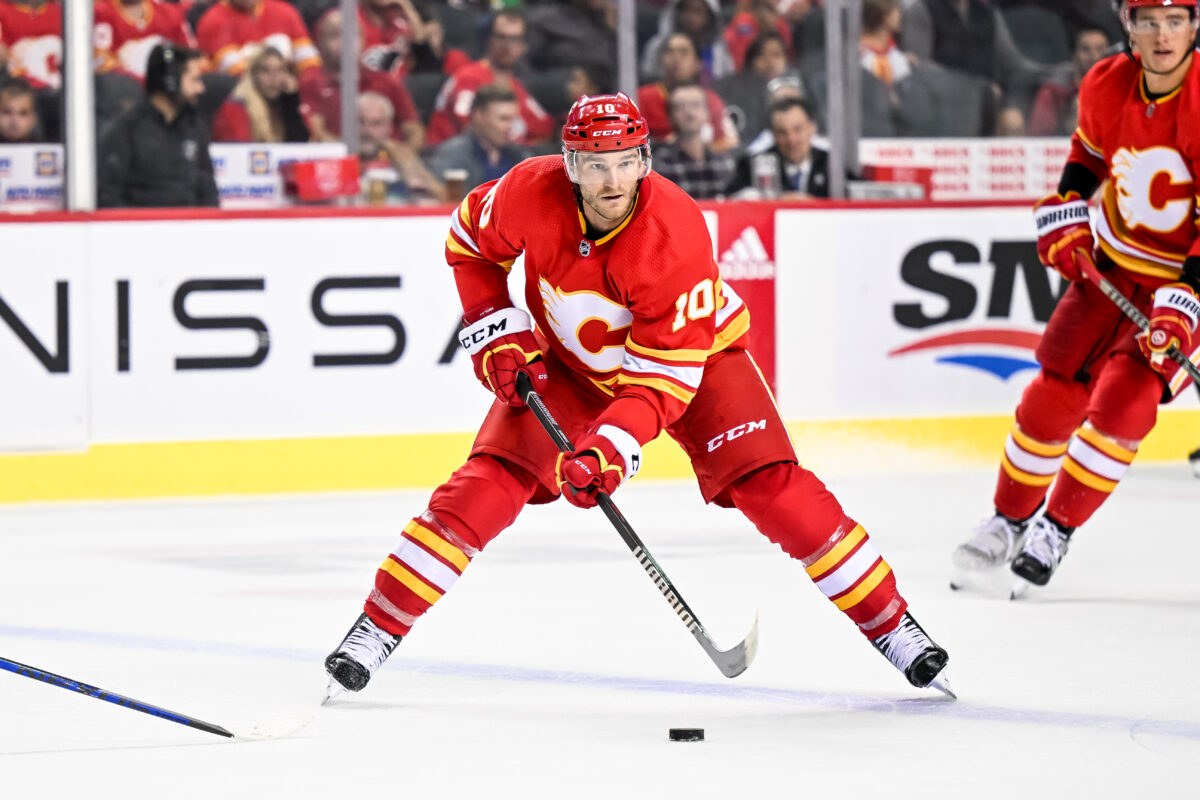
A combination of a significantly altered Flames roster, a more conservative on-ice gameplan, and issues with former head coach Darryl Sutter all factored into a debut performance of 55 points in 79 games – less than half of his total from the 2021-22 season. He still ranked highly on my preseason rankings, but the unique circumstances of his first season in Alberta made me hesitant to place him atop the list.
Yet, Huberdeau has not done himself any favours with his performance through the All-Star break. He’s scored seven goals and 29 points in 49 games to go with a minus-14 plus-minus rating, the latter of which is tied for the worst on the team. Those numbers put him on pace for 11 goals, 36 assists, and 47 points if he plays in all of the Flames’ remaining games, all three of which would be his lowest totals since an injury plagued 2016-17 campaign. He ranks 151st in scoring among all skaters which is a massive chasm between what’s expected of one of the highest paid players in the league, though he has scored at a point-per-game pace since the start of 2024.
Huberdeau signed his current deal before ever playing a game as a member of the Calgary Flames despite already being on the back-swing of his career at 30 years old. It’s unlikely that he ever regains his Hart Trophy form from the 2021-22 campaign, and a contract that takes him through his age-38 campaign almost guarantees that he will take the top spot for the foreseeable future.
Who Owns the NHL’s Worst Contract?
The concept of value is subjective and can vary depending on your preferred mode of analysis or which statistics you place the most emphasis on in your evaluation. Whether you swear by the eye test, traditional boxscore numbers, or any number of advanced analytical metrics, everyone can come up with their own version of this list.
Let me know in the comments – who owns the least valuable contract in the NHL?
Dishonourable Mentions: The NHL’s Other Worst Contracts
- Colton Parayko (St. Louis Blues): Seven years, $6.5 million AAV
- Logan Couture (San Jose Sharks): Four years, $8 million AAV
- Timo Meier (New Jersey Devils): Eight years, $8.8 million AAV
- Brayden Schenn (St. Louis Blues): Five years, $6.5 million AAV
- Ben Chiarot (Detroit Red Wings): Three years, $4.75 million AAV
- Philipp Grubauer (Seattle Kraken): Four years, $5.9 million AAV
- Joonas Korpisalo (Ottawa Senators): Five years, $4 million AAV
- Ryan Graves (Pittsburgh Penguins): Six years, $4.5 million AAV
- Darcy Kuemper (Washington Capitals): Four years, $5.25 million AAV
- John Gibson (Anaheim Ducks): Four years, $6.4 million AAV
Data courtesy of CapFriendly, Evolving Hockey, Natural Stat Trick, and the NHL. Statistics are accurate as of Feb. 7.
